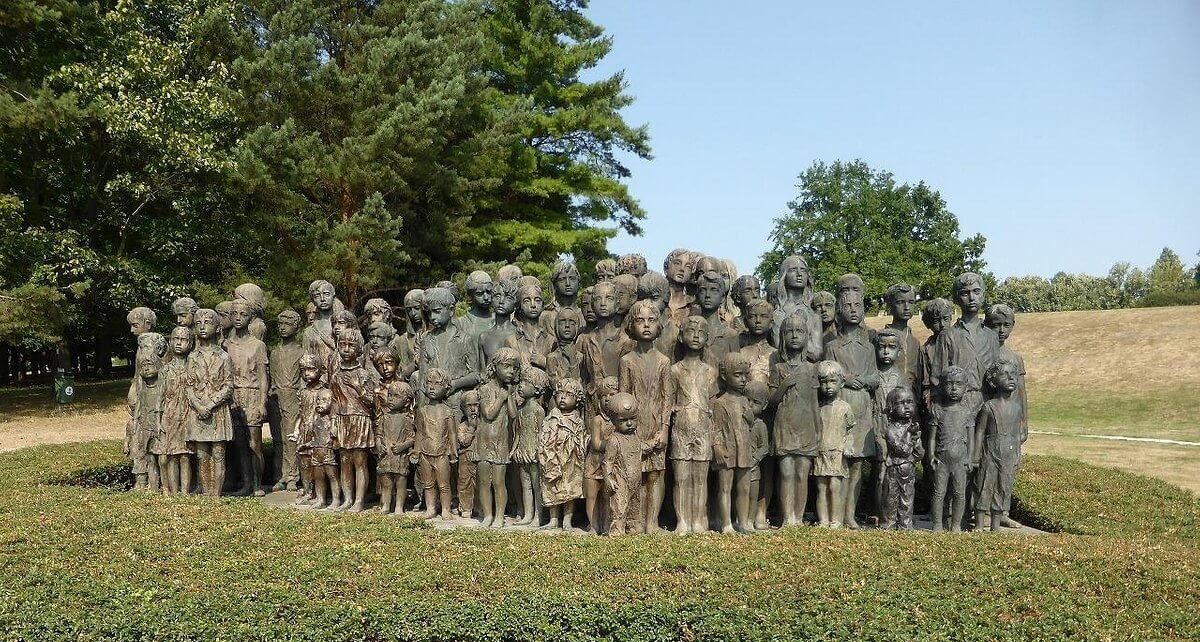Reading Time: 3 minutes
The Nazis massacred the Lidice in 1942. The survivors turned it into a memorial with more than 25,000 rose plants. Dr Roopali tells us about suffering and resilience, exclusively for Different Truths.

I left a piece of my heart in Lidice.
I saw a rose bush marked “From the People of India.” These flowers bloomed bright at the Lidice Memorial Rose Garden and kept alive a critical memory.
The rose garden features roses of 400 different varieties. It’s a memorial — a reminder of resilience and human brutality.
Its message is clear. It must not happen again.
Lidice was once a tiny Czech mining village, 20 miles from Prague.
Lidice was once a tiny Czech mining village, 20 miles from Prague. A place to visit. The Nazis destroyed Lidice as reprisal for the Czech resistance’s assassination of Reinhard Heydrich. He had been a prominent Nazi official – the controller of Lidice.
Adolf Hitler was enraged and ordered immediate retaliation. He decided to make an example of Lidice and slaughtered the village folk. Their homes burned to the ground.
Lidice lives again through the beauteous flowers of the rose garden.
Every year, thousands of people from all over the world visit Lidice to pay their respects to the massacred men, women, and children. Lidice lives again through the beauteous flowers of the rose garden.
The garden signifies “friendship and peace” The people completed its re-creation and rehabilitation in 1954. When the park opened in June 1955, peace committees from other countries donated thousands more rose plants for the garden.
I sat on a gentle, terraced slope. The garden opened to the public on June 19, 1955, with 17,000 rose plants.
I sat on a gentle, terraced slope. The garden opened to the public on June 19, 1955, with 17,000 rose plants. Today, they say, it has more than 25,000. The city of Coventry, England, donated the first 1,000 plants, and cities across Great Britain soon followed suit. The Nazis had failed to erase the village of Lidice.
I was acutely conscious of walking on sacred ground. The memorial building had rows of photos of the people who had lived in the massacred village. Older women, survivors of that night of terror, took us around the memorial. The attackers had filmed the carnage. We watched the remnants of a documentary with that footage. They had done it to flaunt and create fear.
Later such documentaries became crucial evidence in the war crimes trial at Nuremberg.
Survivors and their progeny tend to the Memorial Museum and the Rose Garden.
Survivors and their progeny tend to the Memorial Museum and the Rose Garden. The Lidice survivors, 143 women and 17 children faced a devastating reality at the end of World War II. With family members killed and their homes destroyed.

Mothers had lost their husbands and children, and children had lost their fathers and siblings. But Lidice was not forgotten. An international uproar against the horrible act brought about the global campaign: “Lidice Shall Live Again!”
Each time we visit Lidice, it lives vibrantly. The reconstructed village is a memorial. It keeps alive what the Nazis had sought to destroy. “Weapons cannot cut it, nor can fire burn it; water cannot wet it, nor can wind dry it.” This is how the ancient text the Bhagavad Gita speaks of the soul. And the soul of the people of this once happy bustling village lives on.
Since 1994, there has been a sculpture of those terror-stricken children.
Since 1994, there has been a sculpture of these terror-stricken children. I have not had the privilege to see it. I went to Lidice a decade before the installation. Pictures of it on the Internet take me back to that visit.
While travelling in Europe, there is no getting away from memories of the World Wars and the Holocaust. Haunting symbols of human cruelty and human resistance and resilience mark the footsteps of us travellers.
Miloslava Žižková, a survivor of the concentration camp, returned to Lidice.
Miloslava Žižková, a survivor of the concentration camp, returned to Lidice. She confessed it was not easy for her. Her father and grandfather were killed on that fateful night, and she had to deal with sad memories. Yet this is where her roots were.
Here, at least, survivors found a genuine reason for their return. The massacre at Lidice is a haunting symbol of human suffering worldwide. Today Lidice stands as a testament to humanity and peace.
Pictures from tripadvisor.com















